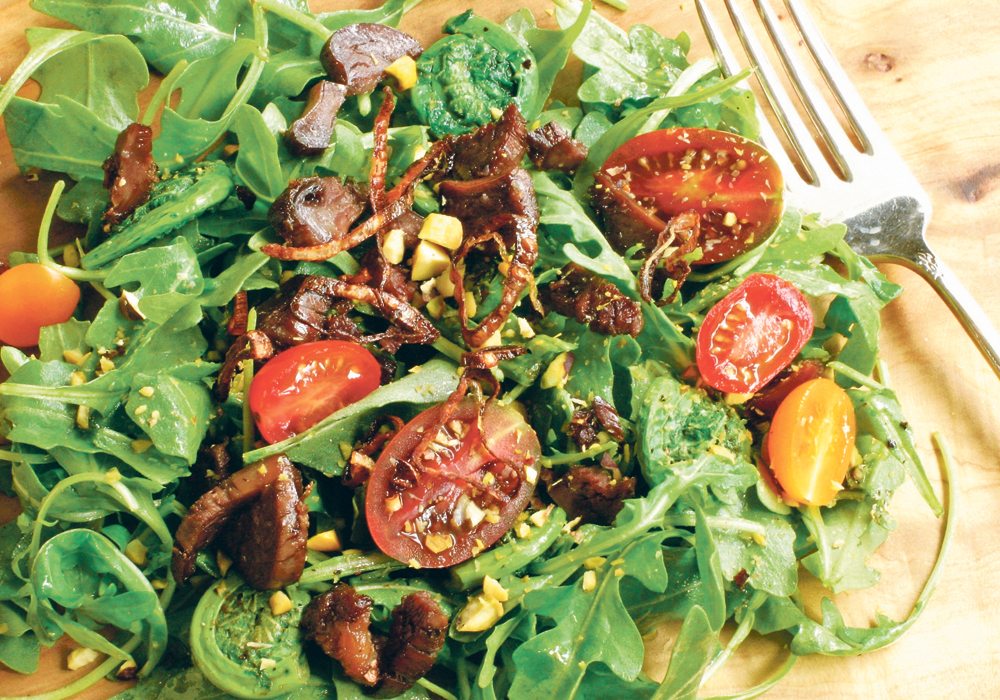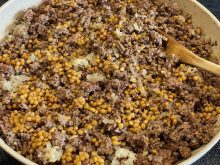A farmer cannot raise only pork tenderloins or hams. The idea of using the whole animal honours the animal by not wasting anything.
This concept is nothing new in traditional aboriginal cooking. Not a bit of the moose goes to waste, not even the nose.
Marm Bailey in Annapolis Royal was making Moose Muffle Soup in the early 1800s. She opened a boarding house after her husband’s death and this soup was famous far and wide.
There are several cookbooks dedicated to using all the parts of the animal but The Whole Beast: Nose to Tail Eating by Fergus Henderson published in 2004 is a classic and is still used as a reference. The nose to tail philosophy of sustainable eating is more popular now than ever.
Read Also

Nutritious pork packed with vitamins, essential minerals
Recipes for pork
If you are new to using unusual parts of animals, start with beef oxtail, giblets from fowl and pigs’ feet or trotters. They are easily acquired at a grocery store or by requesting them from a butcher.
Chicken liver pate
This mild pate is so easy to make.
- 1/2 lb. chicken livers, well-trimmed 500 g
- 1/2 small onion, thinly sliced
- 1 small garlic clove, smashed and peeled
- 1 bay leaf
- 1/4 tsp. thyme leaves 1 mL
- kosher salt
- 1/2 c. water 125 mL
- 6 tbsp. unsalted butter, at room temperature90 mL
- 2 tsp. cognac or brandy 10 mL
- Freshly ground pepper
- Toasted baguette slices, for serving
In a medium saucepan, combine chicken livers, onion, garlic, bay leaf, thyme and 1/2 teaspoon (2 mL) of salt. Add the water and bring to a simmer. Cover, reduce the heat to low and cook, stirring occasionally, until the livers are barely pink inside, about three minutes.
Remove from the heat and let stand, covered, for five minutes.
Discard the bay leaf. Using a slotted spoon, transfer the livers, onion and garlic to a food processor. Process until coarsely pureed.
Add some of the cooking liquid if necessary. With the processing machine on, add butter, two tablespoons (30 mL) at a time, until incorporated. Add the cognac, season with salt and pepper and process until completely smooth. Scrape the pate into two or three large ramekins. Press a piece of plastic wrap directly onto the surface of the pate and refrigerate until firm. Serve chilled with baguette.
Warm salad of chicken gizzards and fiddleheads
When I visited Montreal last spring, I was intrigued to find duck gizzards on the menu of a tony restaurant in the Outremont area. Turns out that the salad is traditionally French and served at lunchtime.
Preparing the gizzards using the confit method renders them very tender.
Be sure the gizzards are warmed for this salad. Whole green beans can be substituted for fiddleheads.
- 1 lb. chicken or duck gizzards 500 g
- canola oil or duck fat
- 1/2 lb. fiddleheads 250 g
- 2 large shallots
- 2 tbsp. pine nuts 30 mL
- 1/4 c. fresh lemon juice 60 mL
- 1 tsp. Dijon mustard 5 mL
- arugula, frisee or mesclun salad greens
Prepare the gizzards by lightly salting them and trimming away some of the tough membrane. Place in an ovenproof dish, one layer deep, and cover with oil or fat. Roast slowly at 200 F (95 C) for two to three hours or until tender. Cool gizzards to room temperature in the oil. Then remove them and drain on paper towels. These can be made up to two days in advance.
Slice shallots into thin rings and saute until crispy in some of the roasting oil. Drain on paper towels and set aside.
Blanch fiddleheads in boiling water for two minutes. Shock them in ice water to stop the cooking, drain and set aside.
Make a vinaigrette using 1/2 cup (125 mL) of the oil used for roasting, fresh lemon juice and Dijon mustard. Whisk until an emulsion is formed.
Lightly toss the salad greens and blanched green beans in the vinaigrette. Arrange in a bowl or on a platter. Top with sliced warmed gizzards, chopped pine nuts and crispy shallots. Serve immediately. Adapted from Restaurant Lemeac Montreal.
Asian style braised pork hocks
- 2 or 3 pork hocks
- 3 stalks of green onions
- 1 1/2 inch of ginger 3.5 cm
- 3 star anise pods
- 1 bulb of garlic
- 1 c. soy sauce 250 mL
- 1/2 c. shaoxing rice wine 125 mL
- 1/4 c. sugar 60 mL
- 2 tbsp. mirin, optional 30 mL
Rub pork hocks with soy sauce to help browning process. Then sear them on all sides in a heavy ovenproof pot such as a Dutch oven, two to three minutes on each side. Move to a plate.
In the same pan, stir fry ginger, garlic and green onions until fragrant, two to three minutes. Add soy sauce, rice wine, sugar, mirin and star anise.
Add pork hocks back to the pot and braise for two hours in a 350 F (180 C) oven.
When hocks become fall-apart tender, remove and reduce the sauce by about half by gently simmering.
When the pork is cool enough to handle, gently twist the bone in the hock and remove. Serve the hocks whole with the pan sauce poured over. Serve with steamed rice.
Garnish with cilantro or chopped green onions.
You can also use a pressure cooker or instant pot rather than the oven but do not add extra water to the sauce and cook on high pressure for 20 to 30 minutes.
Sarah Galvin is a home economist, teacher and farmers’ market vendor at Swift Current, Sask., and a member of Team Resources. She writes a blog at allourfingersinthepie.blogspot.ca. Contact: team@producer.com.

















